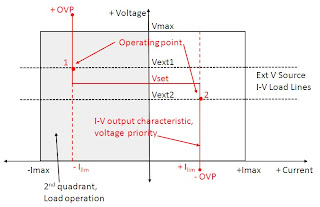http://www.tmworld.com/article/520045-Measurements_optimize_battery_run_time.php
A key factor in getting current drain measurements to yield the deeper insights that really help optimize battery run-time is the dynamic range of measurement, both in amplitude and in time, and then having the ability to analyze the details of these measurements. The need for a great dynamic range of measurement stems from the power-savings nature of today’s wireless battery powered devices. For power-savings it is much more efficient for the device to operate in short bursts of activities, getting as much done as possible in the shortest period of time, and then go into a low power idle or sleep state for an extended period of time between these bursts of activities. Of course the challenge for the designer to get his device to quickly wake up, stabilize, do its thing, and then just as quickly go back to sleep again is no small feat! As one example the current drain of a wireless temperature transmitter for its power-savings type of operation is shown in Figure 1.

Figure 1: Wireless temperature transmitter power-savings current drain
The resulting current drain is pulsed. The amplitude scale has been increased to 20 µA/div to show details of the signal’s base. This particular device’s current drain has the following characteristics:
• Period of ~4 seconds
• Duty cycle of 0.17%
• Currents of 21.8 mA peak and 53.7 µA average for a crest factor of ~400
• Sleep current of 7 µA
This extremely wide dynamic range of amplitude is challenging to measure as it spans about 3 ½ decades. Both DC offset error and noise floors of the measurement equipment must be extremely low as to not limit needed accuracy and obscure details.
Likewise being able to examine details of the current drain during the bursts of activities provides insights about the duration and current drain level of specific operations within the burst. From this you can make determinations about efficiencies of the operations and if there is opportunity to further optimize them. As an example, in standby operation a mobile phone receives in short bursts about every 0.25 to 1 seconds to check for incoming pages and drops back into a sleep state in between the receive (RX) bursts. An expanded view of one of the RX current drain bursts is shown in figure 2.

Figure 2: GPRS mobile phone RX burst details
There are a number of activities taking place during the RX burst. Having sufficient measurement bandwidth and sampling time resolution down to 10’s of µsec provides the deeper insight needed for optimizing these activities. The basic time period for the mobile phone standby operation is on the order of a second but it is usually important to look at the current drain signal over an extended period of time due to variance of activities that can occur during each of the RX bursts. Having either a very deep memory, or even better, high speed data logging, provides the dynamic range in time to get 10’s of µsec of resolution over an extended period of time, so that you can determine overall average current drain while also being able to “count the coulombs” it takes for individual, minute operations, and optimize their efficiencies.
Anticipate seeing more here in future posts about mobile wireless battery-powered devices, as it relates to the “DC” end of the spectrum. In the meantime, while you are using your smart phone or tablet and battery life isn’t quite meeting your expectation (or maybe it is!), you should also marvel at how capable and compact your device is and how far it has come along in contrast to what was the state-of-the-art 5 and 10 years ago!
















